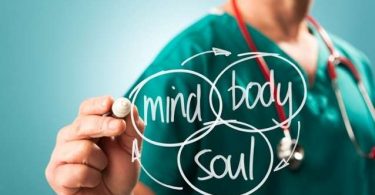Miasms in The Modern World
After Hahnemann, many homeopaths have suggested that since miasms are disease syndromes, there can be more miasms that psora, syphilis and sycosis. The concept is to look for diseases which leave a diseased state in the body even after apparent recovery, especially after suppression. In this regard, the following miasms have been proposed so far:
- Tubercular – J. H. Allen
- Vaccinosis – Dr. Burnett
- Cancer
- Malaria – R. Sankaran
- Ringworm – R. Sankaran
- Typhoid – R. Sankaran
- Leprosy – R. Sankaran
- Smallpox
The understanding and approach of those who have put forward newer miasms is varied and at odds with Hahnemann’s ideas as well. Such differences arise from a different understanding and approach to the disease process. As a result of this the world of miasms has become more chaotic.
Now I will pick up 3 modern authors – Vithoulkas, Sankaran, and Vijayakar and probe into their approach and understanding of chronic miasms.
George Vithoulkas
George Vithoulkas does not fall into the trap of whether miasms are bacteria or simple predisposition to disease. According to him it can be both – a predisposition acquired through a suppressed disease or other strong influences on the vital force like vaccination, strong emotional or mental shocks OR a predisposition which is inherited from parents.
Vithoulkas defines miasms as:
“A miasm is a predisposition towards chronic disease underlying the acute manifestation of an illness –
- Which is transmissible from generation to generation
- Which may respond beneficially to the corresponding nososde prepared from either pathological tissue or from the appropriate drug or vaccine.”
He also says: “…any homeopath who has studied the course of degeneration of patients over a long period of time can attest to the presence of a large number of ‘miasms’.”
Vithoulkas believes that miasms appear as layers (of suppression?) in chronic cases, which need to be peeled one by one through medicines based on the totality of symptoms. Also Vithoulkas believes that any miasm can produce any pathology and the notion that tumors are sycotic, ulcers are syphilitic etc is wrong. Except for the fact that Vithoulkas considers there are many miasms, his approach to the miasms is very classical.
Rajan Sankaran
In his work ‘The Spirit of Homeopathy’, Sankaran had described disease as ‘delusion’, the ‘awareness’ of which becomes a ‘cure’. In his subsequent work ‘The Substance of Homeopathy’, he extends his approach to disease to the concept of miasms. Unlike others who developed their understanding of miasms through the cause and classification of diseases, Sankaran evolved his ideas of miasms by trying to find the common theme in the mental states and delusion of known anti-miasmatic remedies. From there he extended the concept to the physical and pathological states corresponding to the miasms.
For example, to develop an understanding of Psora he studied known anti-psoric remedies like Sulphur and Psorinum and compared their underlying theme, delusions and state to find the common miasmatic ground.
Sankaran says – “The acute (miasm) is the immediate reaction necessary to survive. Psora is the reaction to a situation which demands struggle with the circumstances outside in order to survive. Sycosis is the reaction to a situation that demands that he accepts his own weakness and cover it up to survive. The syphilitic reaction comes with the realization that adjustment is no longer sufficient and that in order to survive he must bring about a radical change in the internal or external circumstances, or both.”
Sankaran’s approach on the mental plane may seem radical to many but on the ground his use of physical symptoms of the miasms is very classical. The only difference is that Sankaran has come to hold the ear from behind the head! Sankaran has evolved his understanding of miasms with his understanding of medicines and their mental states.
The significant aspect of Sankaran’s concept of miasms is his focus on newer miasms like Tubercular, Leprous, Cancer, Malarial, Typhoid and Ringworm. He says Typhoid miasm is a subacute miasm, which lies between the acute, and Psoric miasms. It has the main feeling of a critical situation, which, if properly handled for a critical period, will end in a total recovery. Ringworm miasm lies between Psora and Sycosis. It is characterized by an alteration between periods of struggle with anxiety about its success, and periods of despair and giving up. Malarial miasm, which lies between acute miasm and Sycosis, has an acute feeling of threat that comes up intermittently. Tubercular, Leprosy and Cancer miasm lie between Sycosis and Syphilis. In Tubercular miasm the feeling is of intense oppression and exploitation, and a desire for change. Cancer miasm has a feeling of weakness and incapacity within, with a desire for perfection. Leprosy has the feeling of intense oppression, intense hopelessness, and an intense desire for change.
The other difference in Sankaran’s approach is his list of anti-miastmatic remedies. Since he uses a different classification of miasms and also relies on the ‘state’ of the patient to judge the miasm, he has his own list of antimiastmatic remedies.
I cannot dwell deeper on Sankaran’s approach here but I would like to say that although Sankaran’s miasms appear very different from Hahnemann’s miasms, they are actually not. Sankaran has picked all his miasms from infections and uses physical symptoms too, to identify a miasm just like others. The difference in his work is that he has been able to associate different mental states with each miasm and the transition from one miasm to another is shown through successive changes in the mental state. The only drawback in Sankaran’s approach is that his process relies so heavily on a specific method of case taking, analysis and understanding of mental states that it introduces a lot of subjectivity and others may find it difficult to get the same results by following his approach.
Prafull Vijayakar
Vijayakar’s approach to miasms is not new. He is using very classical Hahnmeannian approach of Psora, Syphilis and Sycosis. The uniqueness in his approach lies in his understanding of these miasms.
Vijayakar’s basic approach is similar to the established understanding of miasms: Psora is related to irritability, Sycosis to excess or deficient growth and Syphilis to destruction. But he does not seem to believe in the concept of infections as the primary source of the miasms. He correlates miasms with the cellular defense mechanisms. Dr. Vijayakar’s approach is that mere symptom-similarity will not give results in chronic diseases, unless the underlying miasm of the patient is taken into consideration.
Vijaykar correlates the physiological defense of the cell with Psora, the constructive defense with Sycosis and the destructive defense with Syphilis. He says that everyone has all the three miasms but the type of cell-defense dominant in a person reflects his dominant miasm. Although novel, this approach to the understanding of miasms appears very one-sided and deficient in many aspects. The excessive focus on the cell to the exclusion of the ‘whole’ leaves lots of open-ended questions. He has tried to present miasms in a scientific garb but has not succeeded much in his efforts at a deeper level.
What he has succeeded in is clinical use of the miasms. If you leave his efforts to explain the miasms through genes and all, the rest of his clinical approach is very easy to follow and good indeed. Vijayakar’s approach is to rely on the totality of the case, which includes the underlying miasm. Unlike Sankaran, who relies on current mental state of the patient, Vijayakar relies on the inherent mental traits (like conscientious, diligent etc) of the person to narrow down his search for the similimum. The way Vijaykar differentiates between the importance of medicines in a given case based on the underlying miasm is worth taking note of. The clinical approach of Vijaykar is very easy to follow and unlike Sankaran, has much less subjectivity.
Conclusion
After going through Hahnemann’s works and understanding the way in which his thoughts evolved, I have come to realize that the theory of miasms has three different aspects –
- Genetic or Inherent predisposition to acquire a disease.
- Acquired predisposition for chronic diseases – through suppression or use of allopathic / antipathic measures.
- Diseases which when untreated or maltreated, lead to chronic disease syndromes related to natural progression of disease or lead to an increase in susceptibility for other diseases.
Hahnemann has talked about all these aspects at one place or other but due to the lack of scientific advancements, he was not able to systematize his understanding of the cause of chronic diseases and chronic miasms. The confusion that is apparent in his works has trickled down to the homeopathic community since the time of Hahnemann. The reason for this is that while homeopaths are often dogmatic about what Hahnemann has written, they rarely try to understand why he wrote, what he wrote. The approach used by Kent, Vithoulkas, Sankaran and Vijayakar is just one-sided approach to this multi-dimensional theory. We need more work to systematize this concept and bring it upon a scientific platform.
End
© Dr. Manish Bhatia






Miasms concept is not accepted by modern medicine therefore it is the need of time that hiden concept of miasms is to explore on the basis of etiology & pharmacodynamics
dr puneet
Scientists at the American National Institute of Health (NIH) found that the basis for the Human Genome Project (HGP) was flawed. They had been looking for exactly which gene causes which disease but found instead that there is no one-to-one correspondence. They even found that some worms have about the same number of genes as a human being. The HGP was a failure.
But at least this failure caused the NIH scientists to begin to study the microbiota of the human being. They then found that each one of us has an average of around 450 different species of bacteria living inside us, some have as much as 1,000 species or more. Some of these are good bacteria and we would die without them. Some are bad. Some are downright vicious. And, as horrible as this may sound, they also found that the human body is comprised of 91% bacteria cells and only 9% human cells.
The result of these studies is that genes don’t really have much to do with illness. They mainly determine physical characteristics like hair color or ethnicity. It’s the bacteria that are really in charge and these bacteria are able to change a person’s DNA. Cell biologist and former medical school professor, Bruce Lipton, wrote a book about the (extreme) limitations of genetics and the new, emerging science of epigenetics.
In addition, scientists such as Lida Mattman, PhD and Trevor Marshall, PhD have independently shown that most, if not all, “autoimmune” disorders are a misnomer. For decades, doctors didn’t know why the immune system would attack its own body. Now science is showing that it is not attacking its own body – the immune system is attacking Cell-Wall-Deficient (CWD) bacteria that had previously been hidden from view, even with powerful microscopes, because its cells are so incredibly tiny. Lupus, Lou Gehrig’s Disease, sarcoidosis, Borrelia (“Lyme Disease”) and many other illnesses are not “autoimmune” diseases – they are caused by CWD bacteria which can be killed with the Marshall Protocol or perhaps antibacterial herbs, or homeopathy.
I think that once homeopaths see the connection between CWD bacteria and these diseases, it will be easier to find the right remedy.
thanks linda for the information.it is very enlightening.
If we don’t understand the theory of miasm , on the light of modern physics we will never come to know what miasm is. what ever Hahnemann assumed after a painstaking observation and experimentations gave concept about three miasms is absolutly correct and it can be proved by the laws of physics.So it will be better not to confuse Homoeopathy because of unawareness and with intuitive and speculative ideas about miasm and without following Hahnemann and his writings we will make our system in a more confused ( increased entropy) state.
Understanding Homeopathic Theory Of ‘Miasms’ In Terms Of Modern Scientific Knowledge
There are many miasms including some brought about by vaccines such as the Tetanus miasms. There are miasms for Chronic Fatigue, Auto-immune Disorders, Lyme, Diabetes and many more. Many miasms remain dormant in a person’s energy field until they become activated and connect to their corresponding illness patterns located in the meridian channels. These illness patterns are what an acupuncturist bumps into as a blockage. Miasms can be activated from trauma, etc.
How do I know this? I am dowser. I have been clearing them for years. Many illnesses have esoteric causes aside from the physical ones. We actually need directions on how to be sick. Energy is information. Removing the information that is causing dis-ease is the first step and the homeopathic remedies are then more effective.